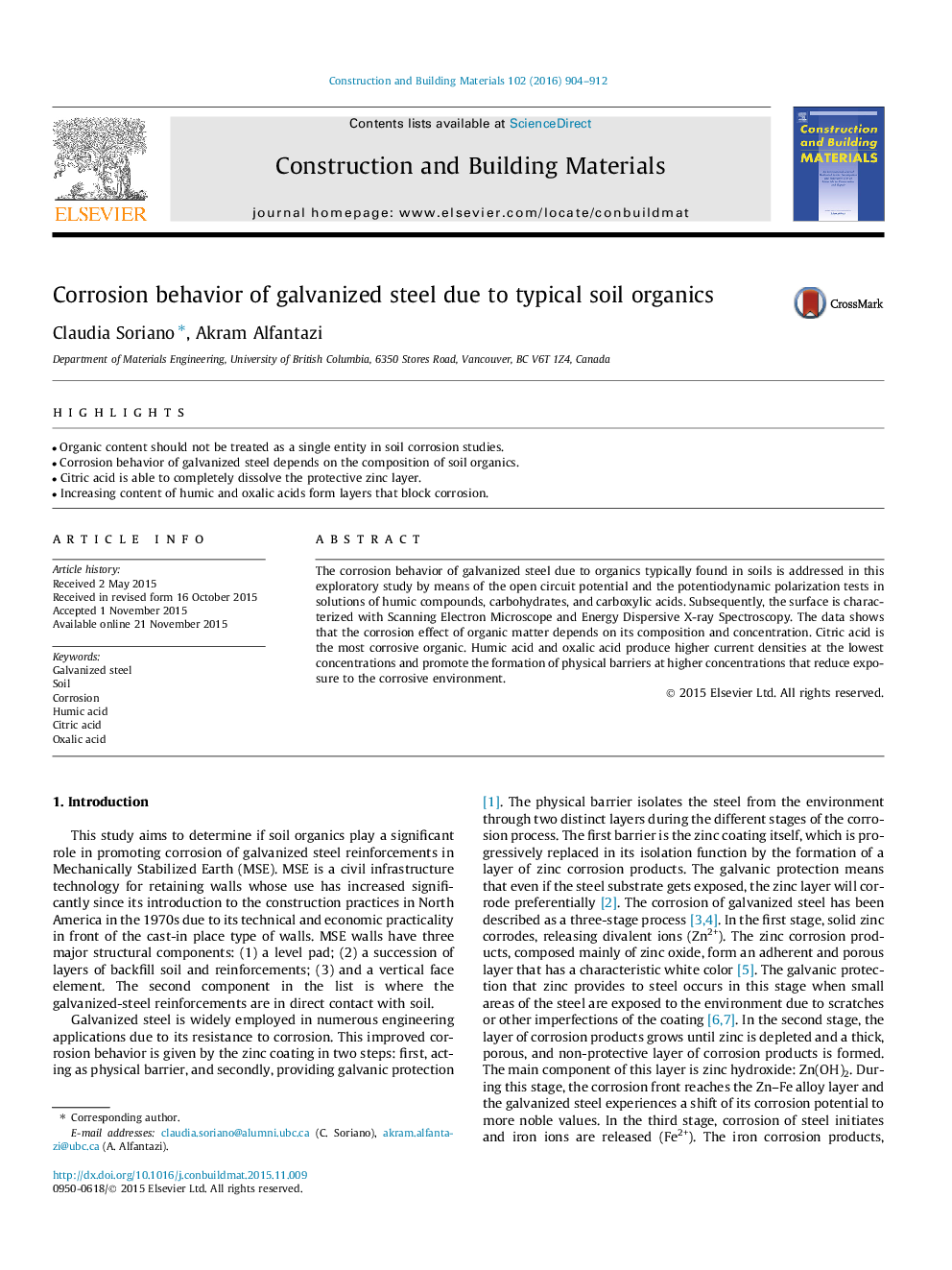| Article ID | Journal | Published Year | Pages | File Type |
|---|---|---|---|---|
| 10285121 | Construction and Building Materials | 2016 | 9 Pages |
Abstract
The corrosion behavior of galvanized steel due to organics typically found in soils is addressed in this exploratory study by means of the open circuit potential and the potentiodynamic polarization tests in solutions of humic compounds, carbohydrates, and carboxylic acids. Subsequently, the surface is characterized with Scanning Electron Microscope and Energy Dispersive X-ray Spectroscopy. The data shows that the corrosion effect of organic matter depends on its composition and concentration. Citric acid is the most corrosive organic. Humic acid and oxalic acid produce higher current densities at the lowest concentrations and promote the formation of physical barriers at higher concentrations that reduce exposure to the corrosive environment.
Related Topics
Physical Sciences and Engineering
Engineering
Civil and Structural Engineering
Authors
Claudia Soriano, Akram Alfantazi,
